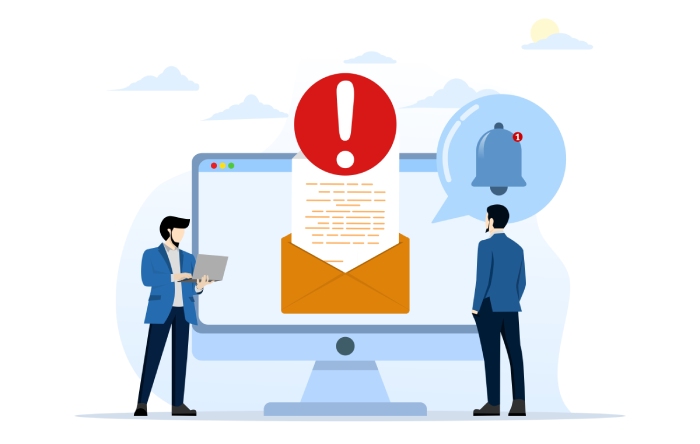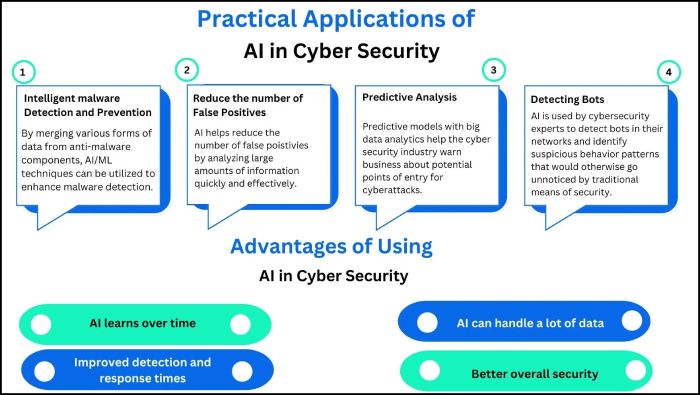How AI-Powered Email Solutions Can Level Up Security Teams
In the face of AI-powered malicious tools utilized by adversaries to undermine email security, traditional methods employed by security teams often fail to meet the demands of modern cybersecurity. Given this challenging environment, the only viable option at this juncture seems to be the adoption of AI-based solutions tailored to combat these emerging threats.
Email security teams’ services are invaluable to any organization today with the ever-increasing threats of phishing, ransomware attacks, and even compromise of email servers. However, the sophistication of malicious actors has been crossing all estimates.
A significant reason for this scenario is the availability of cutting-edge AI-based malicious tools and widely available AI platforms like ChatGPT, which threat actors manipulate and use for their nefarious purposes.
Amid this situation, it’s natural for traditional email security teams’ capabilities to fall short in coping with the evolving email threat landscape. The only solution at this juncture to level up the security teams to the requirements is to utilize AI-based email solutions.
Limitations of Traditional Email Security Teams and Approaches
In the face of AI-based email threats, the efforts of traditional email security teams have become powerless. The conventional approaches and solutions deployed will significantly reduce the effectiveness of countering the sophisticated email threats of today. The following are some of the reasons why traditional email security teams become less effective:
- Delay in detection: Manual threat detection followed by traditional security teams is time-consuming and will delay the detection of sophisticated phishing and ransomware attacks.
- Human error: The inconsistencies caused by human errors in email threat detection can put the organization at a higher risk.
- Ineffective behavior analysis: Ineffective or absent behavior analysis techniques fail to capture subtle anomalies in user behavior and detect threats, including insider ones.
- Inefficiency of signature-based detection: The traditional signature-based detection techniques prove ineffective in combating attacks targeting email servers through vectors like polymorphic malware.
Email Security in the Age of AI Threats
The landscape of email security is undergoing a transformative shift due to the omnipresence of AI-powered malicious tools wielded by adversaries. The traditional approaches that email security teams have relied upon for years are finding themselves strained and ineffective against the onslaught of AI-driven threats.
As these malevolent actors harness the power of AI to create and disseminate sophisticated email-based attacks, organizations are compelled to reevaluate their strategies and adopt AI-based combating solutions.
How AI-powered Solutions Help Email Security Teams Level Up
Since threat actors have started using AI to launch email scams and hack email servers, traditional email security teams can no longer be effective by using non-AI-based solutions. On the other hand, AI-based email security solutions can help security teams level up in the face of sophisticated attacks in the following ways:
- Behavior analysis and anomaly detection: AI-based email solutions can help set a baseline of user behavior, facilitating the detection of anomalies and helping security teams act promptly with the right insights.
- Real-time detection and monitoring: The incorporation of Artificial Intelligence allows for advanced real-time email monitoring, aiding security teams in swiftly detecting and responding to phishing and ransomware attacks. This quick response, bolstered by ransomware protection strategies, aids in minimizing the potential damage these threats could cause.
- Sophisticated threat detection: The capability to handle and analyze a large volume of data in less time helps AI systems detect patterns of malicious intervention, which enables combating evolving and sophisticated threats to email security.
- Elimination of false positives: AI-based email solutions help reduce false positives significantly, saving a lot of time for email security teams and allowing them to focus on actual email scams and threats instead of spending time on harmless emails.
- Advanced incident response and quarantine: AI is beneficial in automated incident response, preset incident-related processes, and efficient quarantine steps enabling the security team to focus more on areas requiring high-level human intervention.
- Prevention of data loss: Data Loss Prevention (DLP) is a significant advantage of AI-based email security solutions, especially for organizations with a large amount of sensitive and confidential data. It ensures the prevention of critical data leaks through outgoing emails.
- Adaptive email security: AI email security solution learns from the ongoing threats and evolves to adapt to the changing threat landscape. It keeps the email security team updated with the latest developments in the email threat arena.
- Scalability: Scalability can be a crucial factor for organizations handling a large volume of emails regularly. AI-based email solutions offer organizations options to scale their efforts with much more ease than traditional solutions.
Rising Threats and the Role of Email Security Teams
In the contemporary digital landscape, characterized by the ever-escalating threats of phishing, ransomware attacks, and compromised email servers, the indispensability of email security teams has reached new heights. Yet, the alarming reality is that the increasing refinement of malicious actors’ techniques has begun to outpace even the most robust traditional defenses.
The underlying catalyst for this widening gap is the ease of access to cutting-edge AI-based malicious tools, and the widespread availability of AI platforms like ChatGPT that threat actors can skillfully manipulate for their nefarious agendas.
Final Words
The right AI-based email security solutions will not only help email security teams level up but also ease their efforts. It will reduce their manual interventions, thus providing them more time to focus on processes requiring more direct human involvement, like email security strategy design and technology development. It will also reduce human errors and eliminate all disadvantages caused by manual intervention.
And ultimately, it will prove the best solution in providing the maximum protection to crucial information assets from email scams, phishing, and ransomware attacks.


